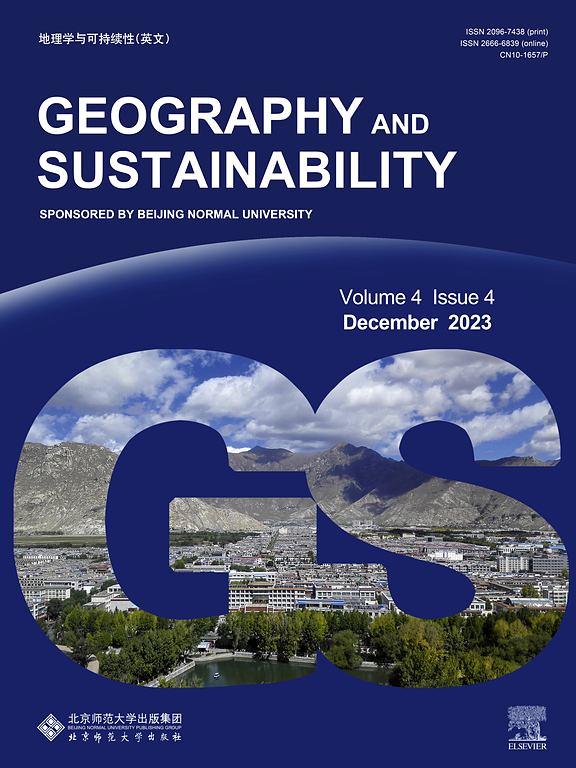Phenological control of vegetation biophysical feedbacks to the regional climate
IF 8
1区 环境科学与生态学
Q1 GEOGRAPHY, PHYSICAL
引用次数: 0
Abstract
Phenology shifts influence regional climate by altering energy, and water fluxes through biophysical processes. However, a quantitative understanding of the phenological control on vegetation’s biophysical feedbacks to regional climate remains elusive. Using long-term remote sensing observations and Weather Research and Forecasting (WRF) model simulations, we investigated vegetation phenology changes from 2003 to 2020 and quantified their biophysical controls on the regional climate in Northeast China. Our findings elucidated that earlier green-up contributed to a prolonged growing season in forests, while advanced green-up and delayed dormancy extended the growing season in croplands. This prolonged presence and increased maximum green cover intensified climate-vegetation interactions, resulting in more significant surface cooling in croplands compared to forests. Surface cooling from forest phenology changes was prominent during May’s green-up (-0.53 ± 0.07 °C), while crop phenology changes induced cooling throughout the growing season, particularly in June (-0.47 ± 0.15 °C), July (-0.48 ± 0.11 °C), and September (-0.28 ± 0.09 °C). Furthermore, we unraveled the contributions of different biophysical pathways to temperature feedback using a two-resistance attribution model, with aerodynamic resistance emerging as the dominant factor. Crucially, our findings underscored that the land surface temperature (LST) sensitivity, exhibited substantially higher values in croplands rather than temperate forests. These strong sensitivities, coupled with the projected continuation of phenology shifts, portend further growing season cooling in croplands. These findings contribute to a more comprehensive understanding of the intricate feedback mechanisms between vegetation phenology and surface temperature, emphasizing the significance of vegetation phenology dynamics in shaping regional climate pattern and seasonality.

植被生物物理对区域气候反馈的物候控制
本文章由计算机程序翻译,如有差异,请以英文原文为准。
求助全文
约1分钟内获得全文
求助全文
来源期刊

Geography and Sustainability
Social Sciences-Geography, Planning and Development
CiteScore
16.70
自引率
3.10%
发文量
32
审稿时长
41 days
期刊介绍:
Geography and Sustainability serves as a central hub for interdisciplinary research and education aimed at promoting sustainable development from an integrated geography perspective. By bridging natural and human sciences, the journal fosters broader analysis and innovative thinking on global and regional sustainability issues.
Geography and Sustainability welcomes original, high-quality research articles, review articles, short communications, technical comments, perspective articles and editorials on the following themes:
Geographical Processes: Interactions with and between water, soil, atmosphere and the biosphere and their spatio-temporal variations;
Human-Environmental Systems: Interactions between humans and the environment, resilience of socio-ecological systems and vulnerability;
Ecosystem Services and Human Wellbeing: Ecosystem structure, processes, services and their linkages with human wellbeing;
Sustainable Development: Theory, practice and critical challenges in sustainable development.
 求助内容:
求助内容: 应助结果提醒方式:
应助结果提醒方式:


